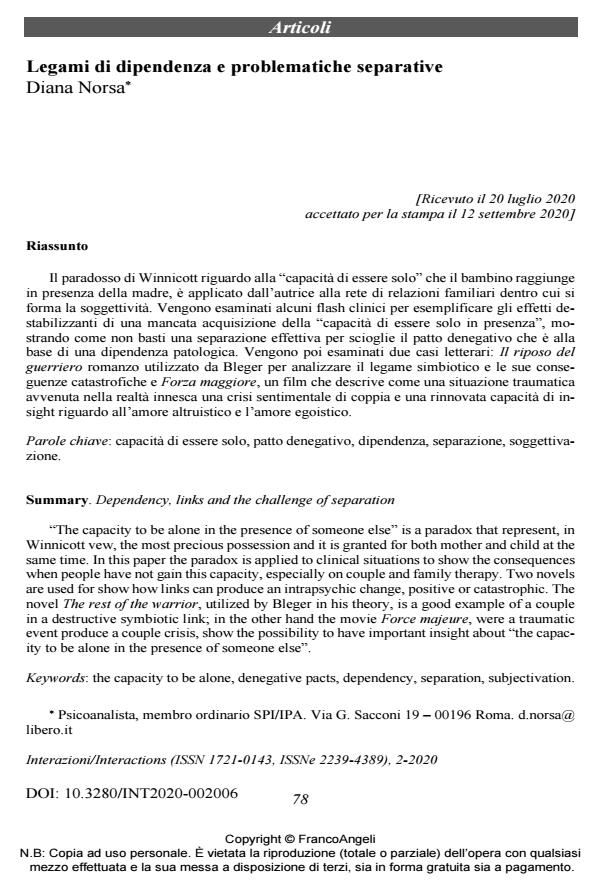Dependency, links and the challenge of separation
Journal title INTERAZIONI
Author/s Diana Norsa
Publishing Year 2020 Issue 2020/2
Language Italian Pages 17 P. 78-94 File size 217 KB
DOI 10.3280/INT2020-002006
DOI is like a bar code for intellectual property: to have more infomation
click here
Below, you can see the article first page
If you want to buy this article in PDF format, you can do it, following the instructions to buy download credits

FrancoAngeli is member of Publishers International Linking Association, Inc (PILA), a not-for-profit association which run the CrossRef service enabling links to and from online scholarly content.
"The capacity to be alone in the presence of someone else" is a paradox that represent, in Winnicott vew, the most precious possession and it is granted for both mother and child at the same time. In this paper the paradox is applied to clinical situations to show the consequences when people have not gain this capacity, especially on couple and family therapy. Two novels are used for show how links can produce an intrapsychic change, positive or catastrophic. The novel The rest of the warrior, utilized by Bleger in his theory, is a good example of a couple in a destructive symbiotic link; in the other hand the movie Force majeure, were a traumatic event produce a couple crisis, show the possibility to have important insight about "the capaci-ty to be alone in the presence of someone else".
Keywords: The capacity to be alone, denegative pacts, dependency, separation, subjectivation.
Diana Norsa, Legami di dipendenza e problematiche separative in "INTERAZIONI" 2/2020, pp 78-94, DOI: 10.3280/INT2020-002006